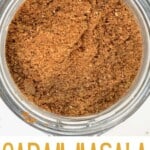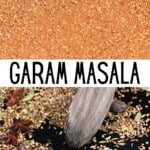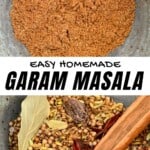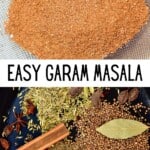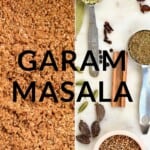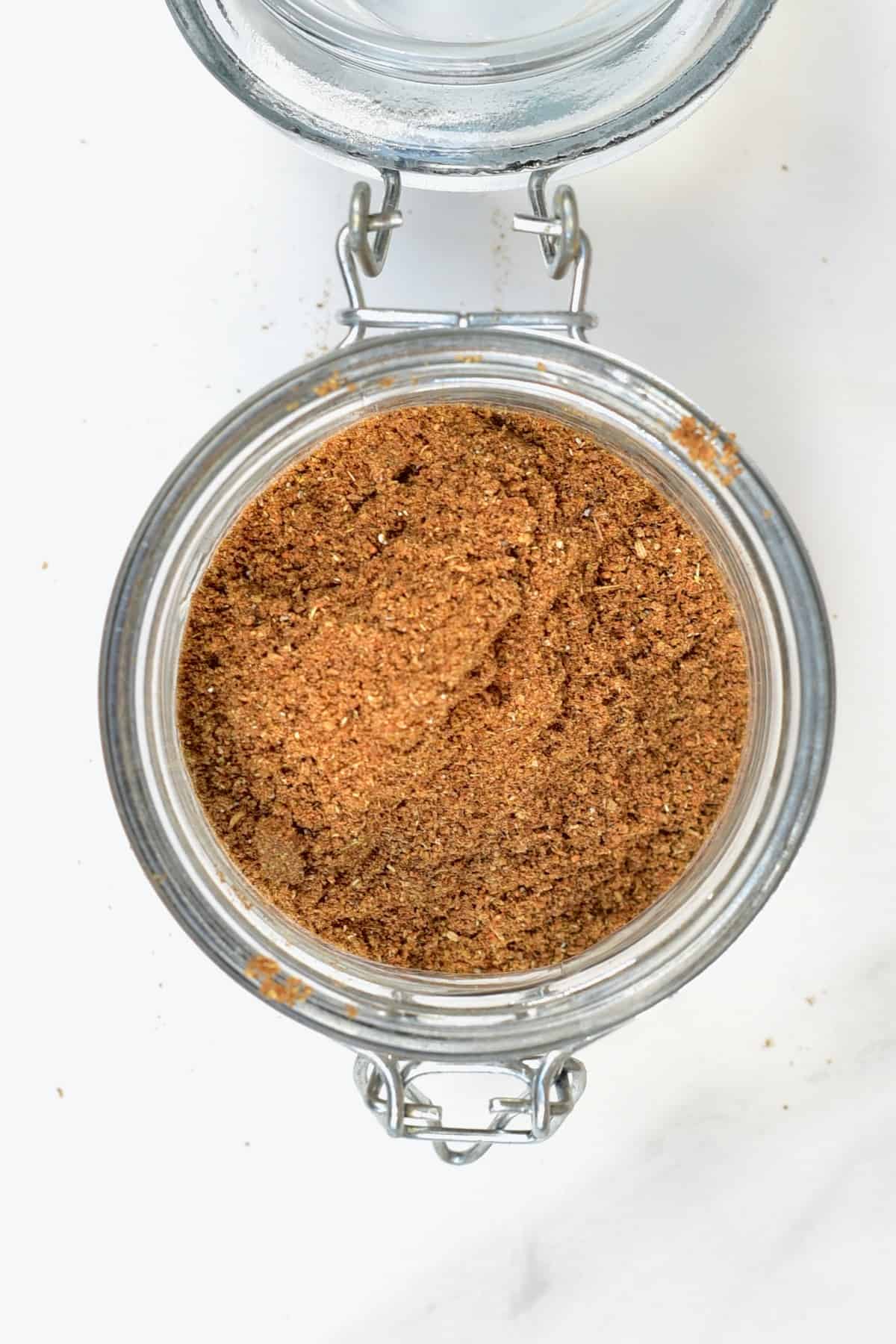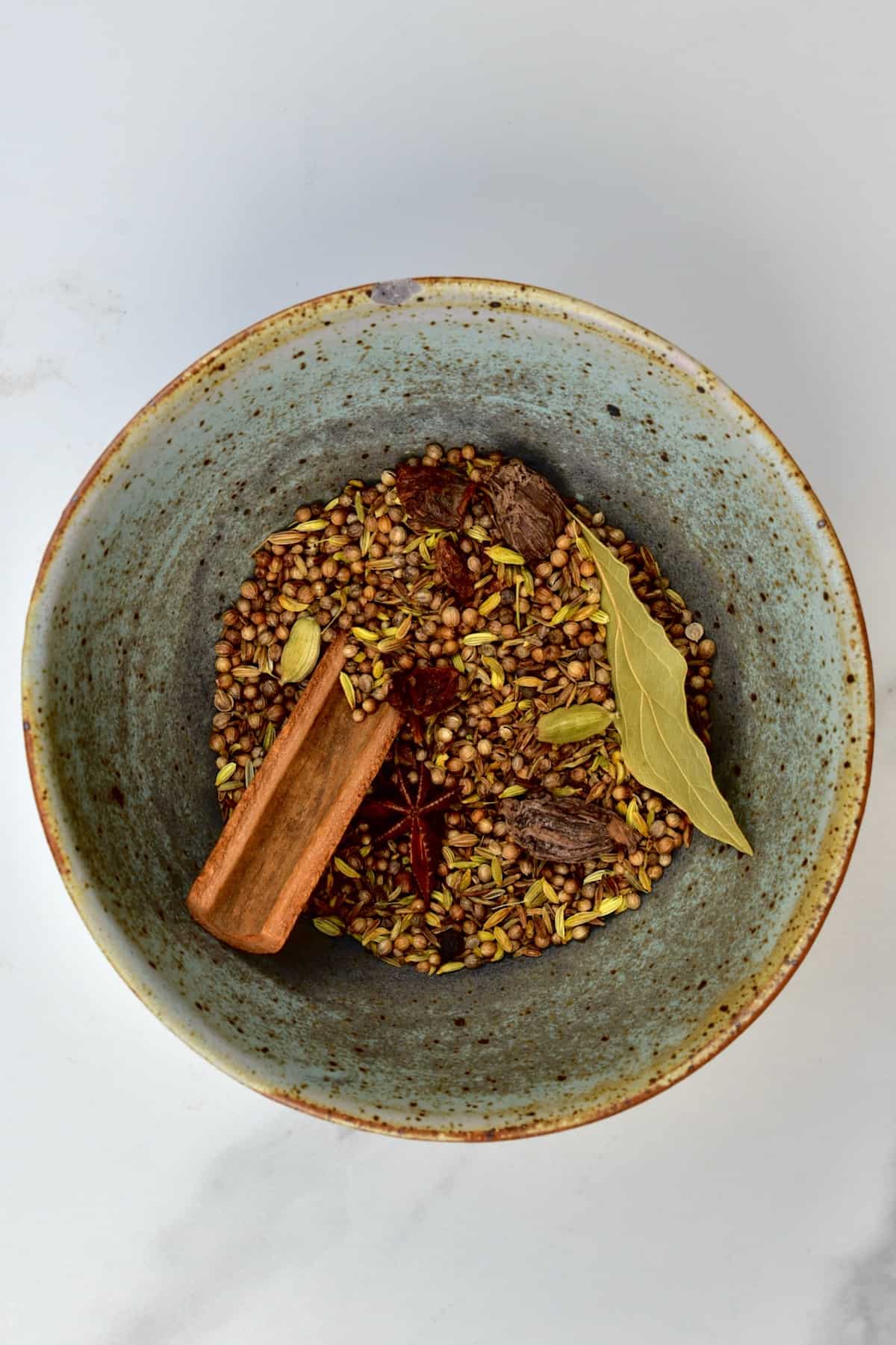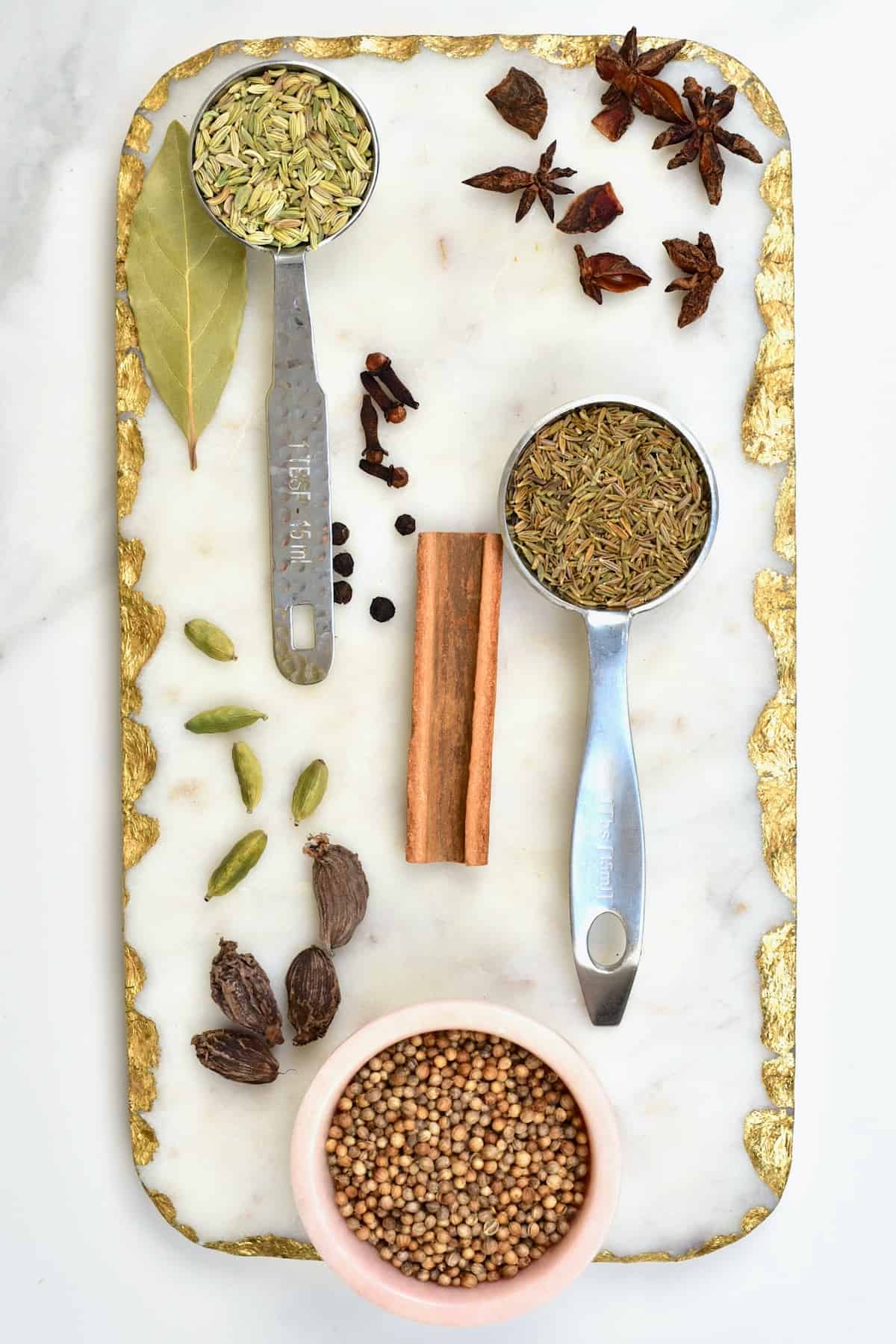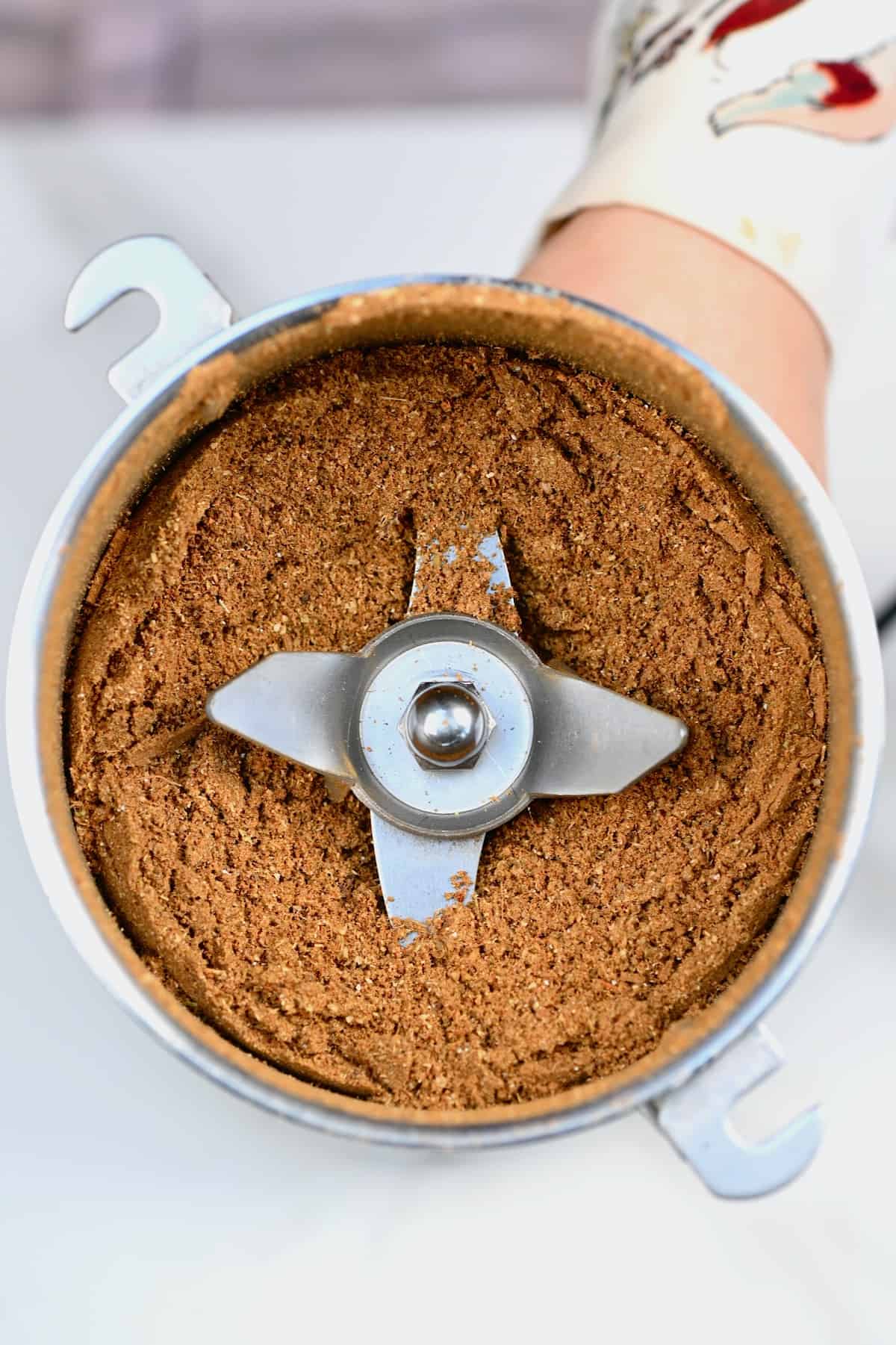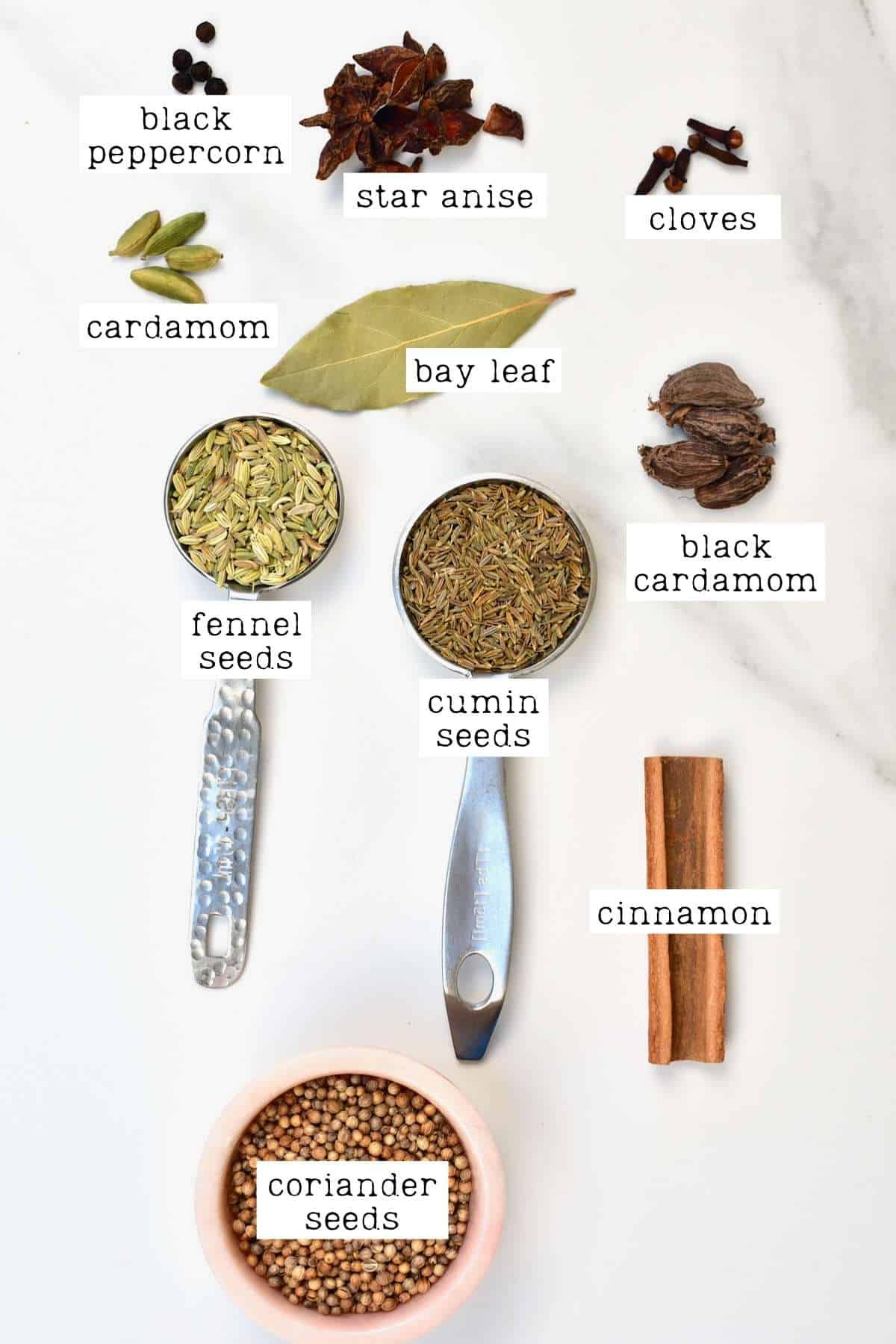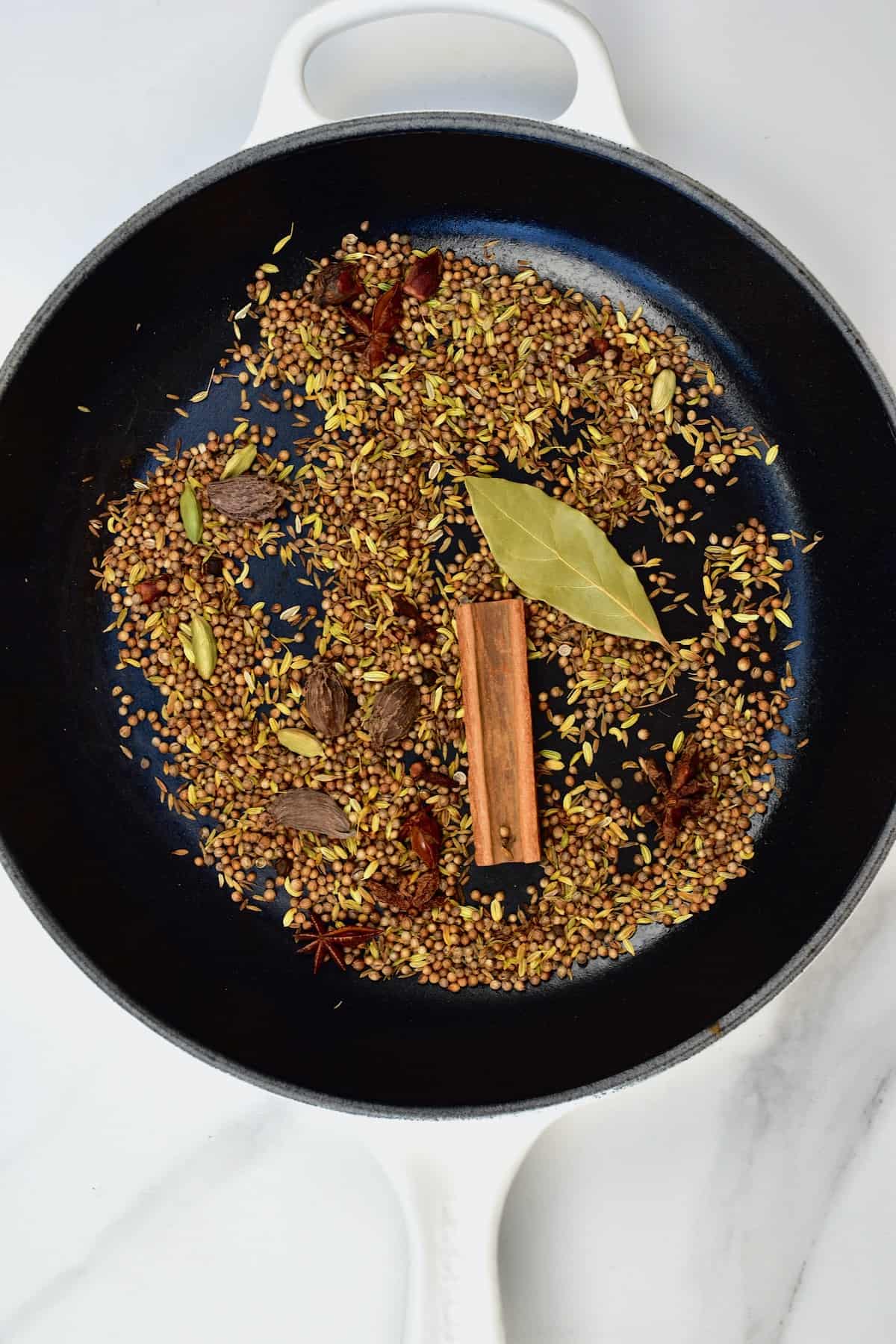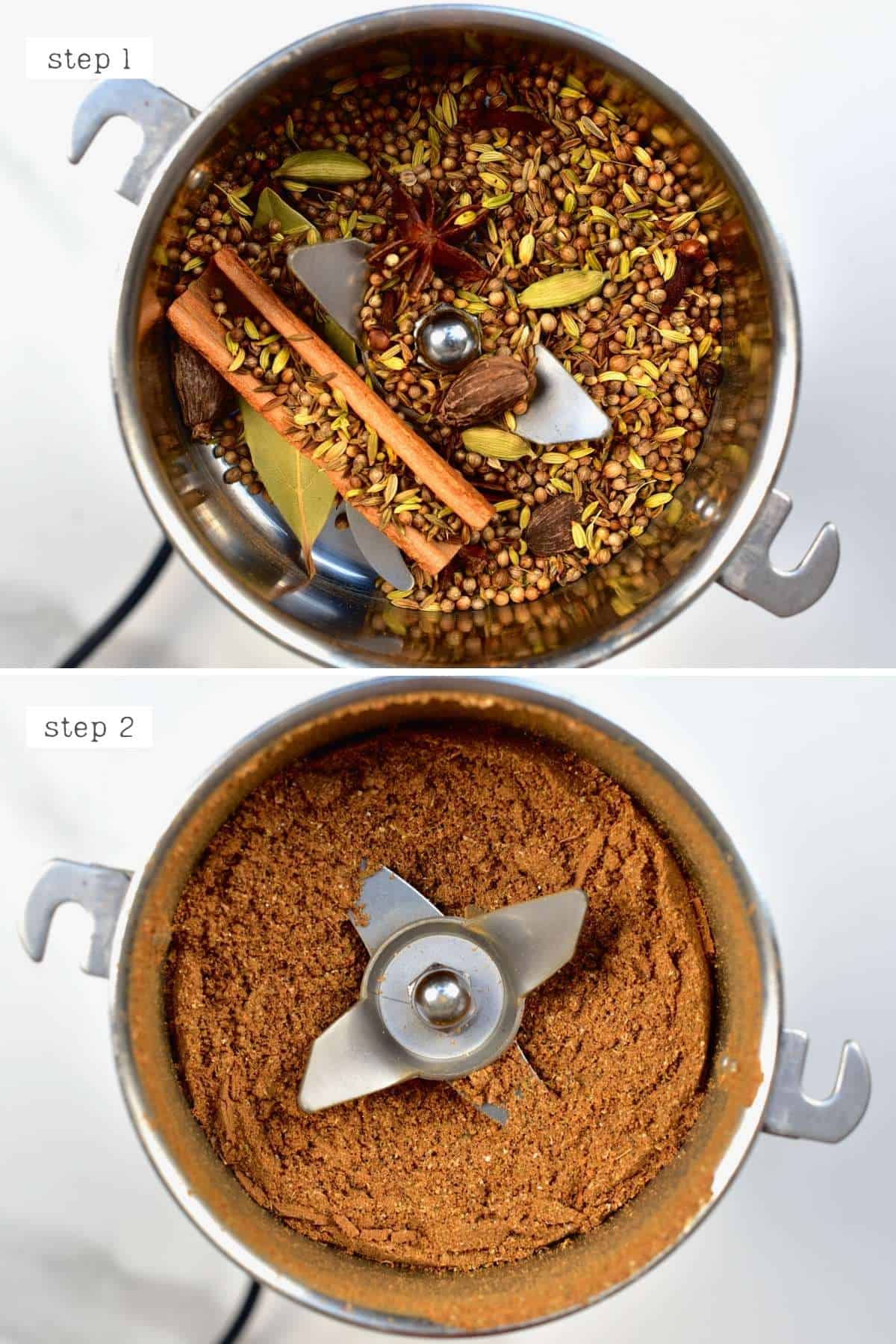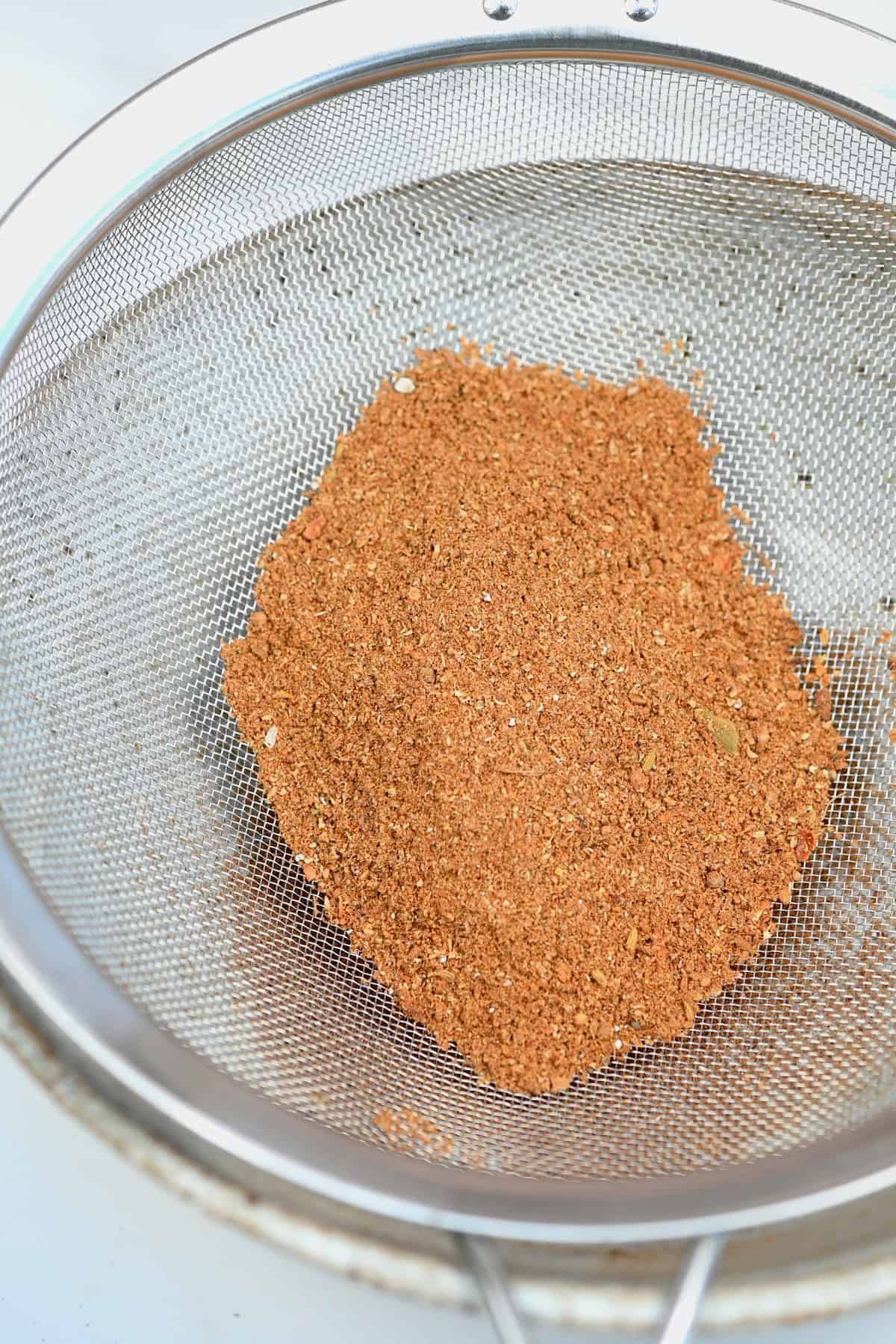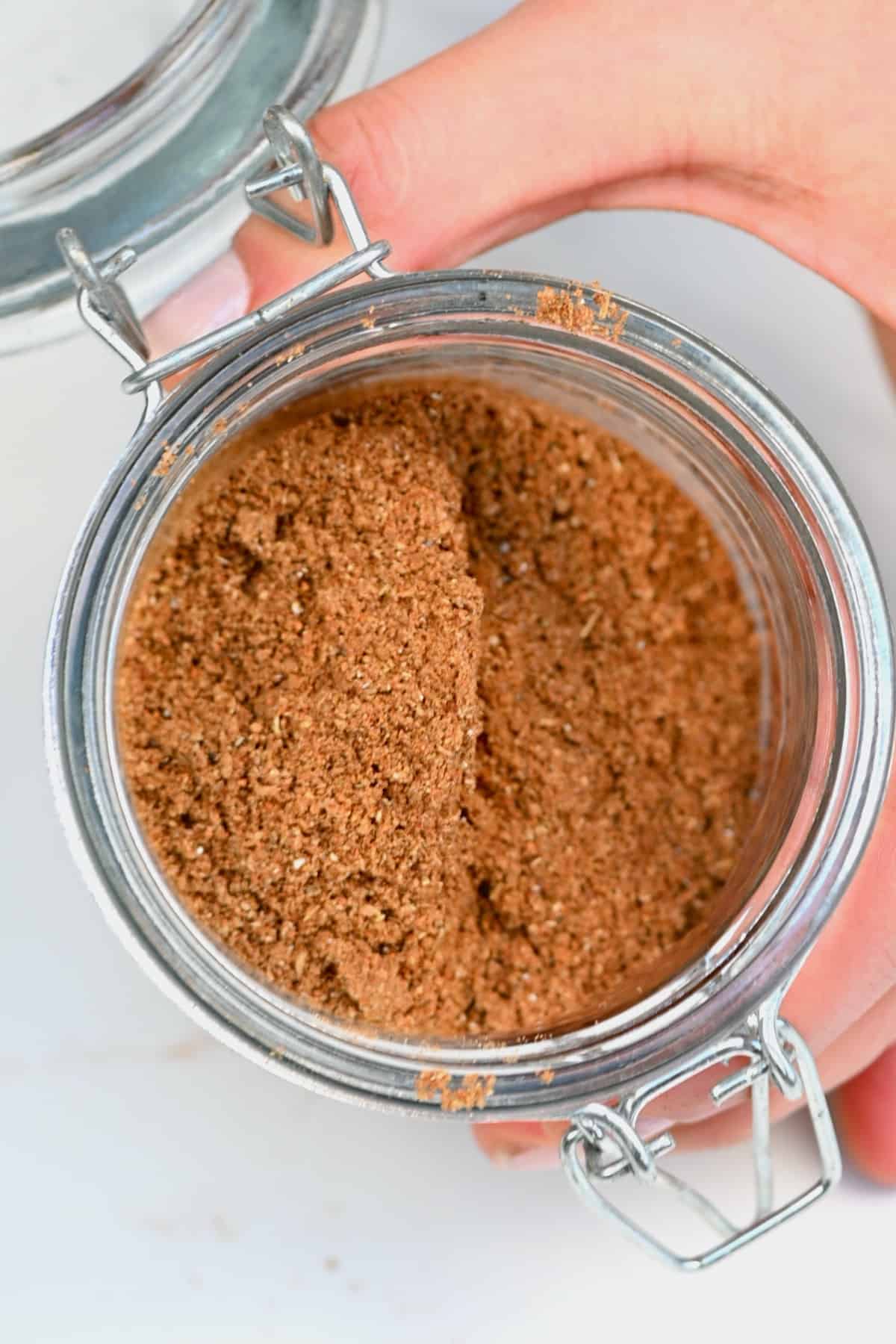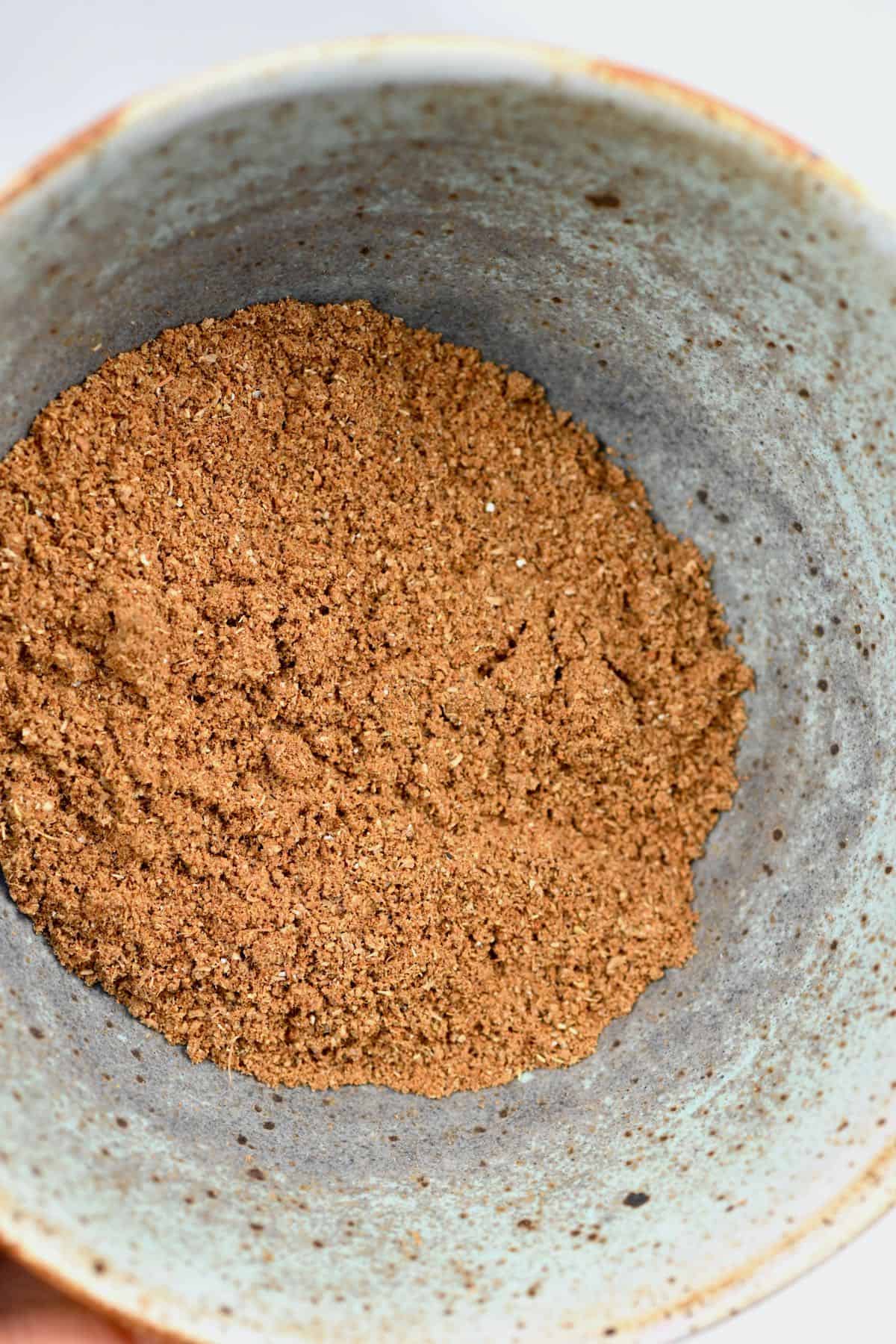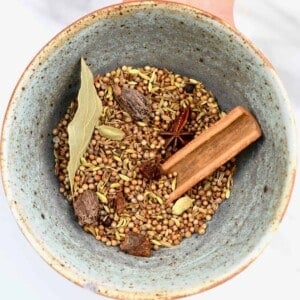Having just shared a recipe for Ayran, a savory yogurt drink that pairs wonderfully with spicy meals (like this vegetarian butter chicken), I haven’t stopped craving Indian food since (just a little insight into the way my brain works). However, as I’m all about trying to make everything from scratch, I obviously had to make this garam masala spice blend first! I’ve really enjoyed experimenting with making my own spice blends recently – they’re quick to make, fresh, and packed with flavor that many store-bought options aren’t. I’ve already shared several spice blends, including shawarma seasoning, falafel spice, Italian seasoning, taco seasoning, as well as methods on how to dry thyme, how to dry rosemary, and how to dry mint at home. Now it’s the turn of this homemade garam masala recipe!
What is garam masala?
Garam masala is a spice blend originating from South Asia (in Hindi, garam means ‘hot’ and masala is ‘blended spices’) that is practically considered an ‘essential’ spice blend to many Asian households, adding wonderfully warm spices to season all kinds of dishes. Depending on where you’re based, the actual composition of the garam masala spice blend changes, though several typical ingredients are present: cloves, cinnamon, cardamom, nutmeg, black peppercorns, fennel, bay leaves, cumin, and coriander seeds. However, homemade blends differ. The exact herbs, spices, and ratios will vary from household to household (or even between the people within a home in some cases!), as people tweak it to personal preference. So, for those who don’t know where to begin, this garam masala recipe is a great base masala powder that you can build upon and tweak to your personal preference. Soon, you’ll be boasting about your own garam masala spice blend, too!
Garam masala vs. curry powder
Surprisingly both garam masala and yellow curry powder include many of the same spices. However, the actual composition of the spices is very different. Curry powder is usually based around turmeric (which gives it the golden color) and with a milder, more savory flavor (likely due to a large amount of turmeric, which is mild). In comparison, a garam masala recipe uses more robust, pungent spices and has a more sweet and savory flavor (with the addition of cinnamon and nutmeg). The use of the two also differs. Though in very few cases, the two can be used interchangeably, a majority of the time, garam masala is added to dishes towards the end of the cooking process as a ‘finishing spice.’ The lack of cooking means their flavor is preserved. Oh, and one last thing, curry powder isn’t even an Indian spice mix and isn’t sold there!
The ingredients
Essentially, a good garam masala spice blend should contain a mixture of sweet, savory, and often hot, with additional ingredients that provide extra ‘fragrance.’ I like to add spice to recipes on more of an individual basis, so I rely on black peppercorns to provide a little heat and have made the chile optional. For sweetness, I’ve included cinnamon and cloves. For that savory flavor, I’ve included a bay leaf plus cumin and coriander. Finally, for fragrance, I’ve included cardamom and star anise.
Cumin seeds: you can also experiment with using black cumin seeds. Coriander seeds Black peppercorns Fennel seeds: this ingredient is in ‘Kashmir’ style garam masala recipes – I love it, so I’ve included it. Feel free to omit it if preferred, though. Cardamom: I use both green and black cardamom pods. Black cardamom has a strong, pungent flavor, though, so you may want to omit it. You can use the whole roasted pods, too – not just the seeds. Cinnamon stick: I love to use whole cinnamon sticks as I find they have a ‘fuller’ flavor than pre-ground cinnamon. If possible, use cassia cinnamon. Bay leaf: there are different types of bay leaves. If possible, try to use Indian Bay as it has a vastly different flavor to the other. Cloves Star Anise
Optional
Chile powder: many garam masala recipes (particularly the further South in India that you go) contain chile. If you want to, feel free to add enough to your preferred level (start with around 1/2 tsp chili flakes and increase to personal preference). Nutmeg: If you want to add this, I suggest using around 1/4 tsp.
How to make garam masala
First, add all the spices to a dry pan and toast over medium-low heat for around 2 minutes or until it smells very fragrant. Make sure to stir them constantly so they don’t burn. Follow the same process if using ground spices – but be very careful not to let the spices burn. Allow them to cool for a few minutes before transferring everything to an electric coffee or spice grinder and grind into a fine powder. It’s a good idea to shake the grinder a few times to encourage the spices to evenly grind. You may also be able to use the smallest jug in a blender like a magic bullet. Then, add the powder to a sieve to collect any of the larger bits and re-grind them.
How to store
It’s best to store the garam masala spice mix in an airtight glass container in a cool location for up to 6 months. While it can be used beyond this, the spice blend’s potency will be reduced over time. In fact, for the best results, I recommend using it within 6 weeks. Alternatively, you can also keep the spice blend in the freezer for up to a year. Note: Plastic containers will absorb the aromas of the spice mix and cling to them.
Recipe Notes
Cleaning the spices: depending on where you’ve sourced the spices, you may want to clean them. Cinnamon and coriander can have worms – by breaking apart a few of the seeds/the cinnamon, you can make sure that they’re fine. You could, additionally, wipe down the cinnamon with a damp cloth. Using black cardamon: black cardamom has a very pungent flavor. If you’re new to the spice blend, I suggest reducing the amount used, to begin with, and increase to personal preference. The cinnamon: I tend to roast and grind the cinnamon stick whole. However, you may want to lightly break it into smaller pieces with a pestle or similar tool before toasting/grinding. Using a mortar and pestle: if you don’t have an electric coffee/spice grinder, then you can grind the spices by hand using a mortar and pestle. Just be aware that this will take a fair bit of arm work. The spice grinder: if you don’t already own a spice grinder and plan on using your coffee grinder for this. Be aware that the spices’ fragrance and flavor can linger within the machine and affect your coffee. For that reason, I recommend having one grinder specifically for food usage. Alternatively, you can grind white rice in the coffee grinder as it will help absorb the spice’s fragrance.
Related DIYs
How to Make Garlic Powder How to Make Onion Flakes Simple Golden Spice (Golden Milk Powder) How to Make Chili Flakes (Oven + Dehydrator) How to Make Ginger Powder (Two Methods) Easy Thai Red Curry Paste (5-Minute) Easy Thai Green Curry Paste Simple Mexican Seasoning (Mexican Spice Blend) How to Make Flaky Salt (Plain and Infused)
If you try making garam masala at home, then let me know your thoughts and questions in the comments. I’d also really appreciate a recipe rating and would love to see your recreations – just tag @AlphaFoodie.

